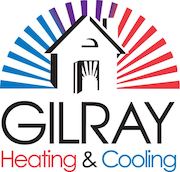
When shopping for a heating and cooling system for your home, it’s critical to choose one that balances efficiency, operation and finances. That’s why many families explore the possibility of mini-splits to heat and cool their home.
Mini-splits—often referred to as ductless mini-splits—offer many advantages that make them an attractive choice for both homes and businesses. They're very energy efficient, lowering energy consumption and saving on utility expenses, because they avoid the energy losses affiliated with the ductwork found in traditional HVAC systems. They also enable users to customize the temperature in each room, boosting overall comfort while not wasting energy.
If you’re interested in mini-split installation in Wausau, it’s important to first find out if these devices are recommended for your living situation. Here, we’ll examine how mini-splits compare to other heating and cooling systems.
What a Mini-Split Is and How It Works
A mini-split, or ductless mini-split, is a heating and cooling device that does not use ductwork. It's often used in homes that don't have any air ducts and for homes with rooms that aren’t served well by the residence's existing HVAC system.
A mini-split system consists of two main components: an outdoor compressor/condenser and an indoor air-handling component. They are connected by a conduit containing the power cable, refrigerant tubing, suction tubing and a condensate drain.
Here's how it works: the exterior compressor distributes the refrigerant necessary for heat exchange throughout the coils and the air handler. The in-house device pulls in air from the room, cools or heats it over the coils and pushes the conditioned air back into the room.
Mini-Split vs. Central Air
Mini-splits offer targeted cooling in specific rooms or zones of your home. They are excellent for energy efficiency because they only condition the areas you desire. However, they may not blend seamlessly into every room due to their wall-mounted indoor units.
On the contrary, a central air system uniformly chills your entire home, producing consistent comfort levels throughout. Its ductwork is out of sight, preserving the interior design of your home. On the other hand, it may not be as energy efficient as a mini-split, especially in bigger homes or residences where certain spots may not need nonstop conditioning.
Mini-Split vs. Window AC/Window Unit
Mini-splits are typically more energy efficient and quieter than a window air conditioning unit and are able to cool multiple rooms. This is why mini-splits are a flexible option for many homeowners. They also use a type of refrigerant that is more earth-safe, limiting their environmental impact. These devices can even add value to your home due to their sturdy nature and remarkable cooling capabilities. However, they come with a greater up-front cost.
On the contrary, window AC units are less expensive initially. They might be a good fit for homes that are not able to accommodate a central AC system or for families with budget constraints. Even with these advantages, window units can consume up to 40% more energy than ductless mini-split systems and often are louder.
Mini-Split vs. Portable AC
The answer to what is better, a ductless mini-split or a portable air conditioning unit, will depend on on your priorities. If your main focus is energy efficiency and performance, a mini-split is heads and shoulders better than a portable AC unit. However, if budget is a significant concern, a portable AC costs less.
Mini-Split vs. Gas Furnace
Choosing between a mini-split system and a gas furnace depends on a variety of factors such as the climate in your city, home size, energy efficiency preferences and how much you plan on spending.
A mini-split system most of the time is more energy efficient than a gas furnace. It can heat and cool targeted areas within your home, supplying custom climate control in targeted rooms. Mini-splits also are generally quieter and have a higher up-front cost, but their operating costs are usually less due to their superior energy efficiency.
However, a gas furnace can be an extremely effective heating remedy, particularly in colder climates where mini-split heat pumps may not be able to maintain comfort levels in the bitter cold. Although they are less energy efficient than mini-splits, gas furnaces typically cost less. However, their operating costs can be greater, especially if natural gas prices jump up.
Mini-Split vs. Heat Pump
Mini-splits and heat pumps use the process of heat transfer. They are both energy efficient, but a heat pump's air ducts can cause more energy usage. This difference aside, the choice between a mini-split and a heat pump often is based on on a family's needs and circumstances.
By way of example, if you are living in a warmer climate and primarily need cooling, a mini-split system might be a better choice. On the other hand, if you need both heating and cooling and already have ductwork in place, a heat pump may be a more efficient option.
Mini-Split vs. Space Heater
With regards to heating and cooling a residence, mini-splits and space heaters each have merits. However, for all around efficiency, versatility, comfort and safety, mini-splits outperform space heaters. Mini-splits provide superior energy efficiency because they deliver conditioned air directly to different zones and can serve several rooms at once.
Space heaters are a great deal less expensive to buy but are typically reserved for heating a limited area or a single room. They also are usually less energy efficient. In contrast to mini-splits, space heaters do not provide cooling. The most significant drawback for space heaters is the risk of fire. Industry experts say some 1,700 fires each year involve space heaters.
